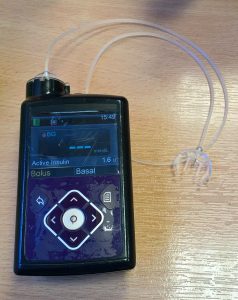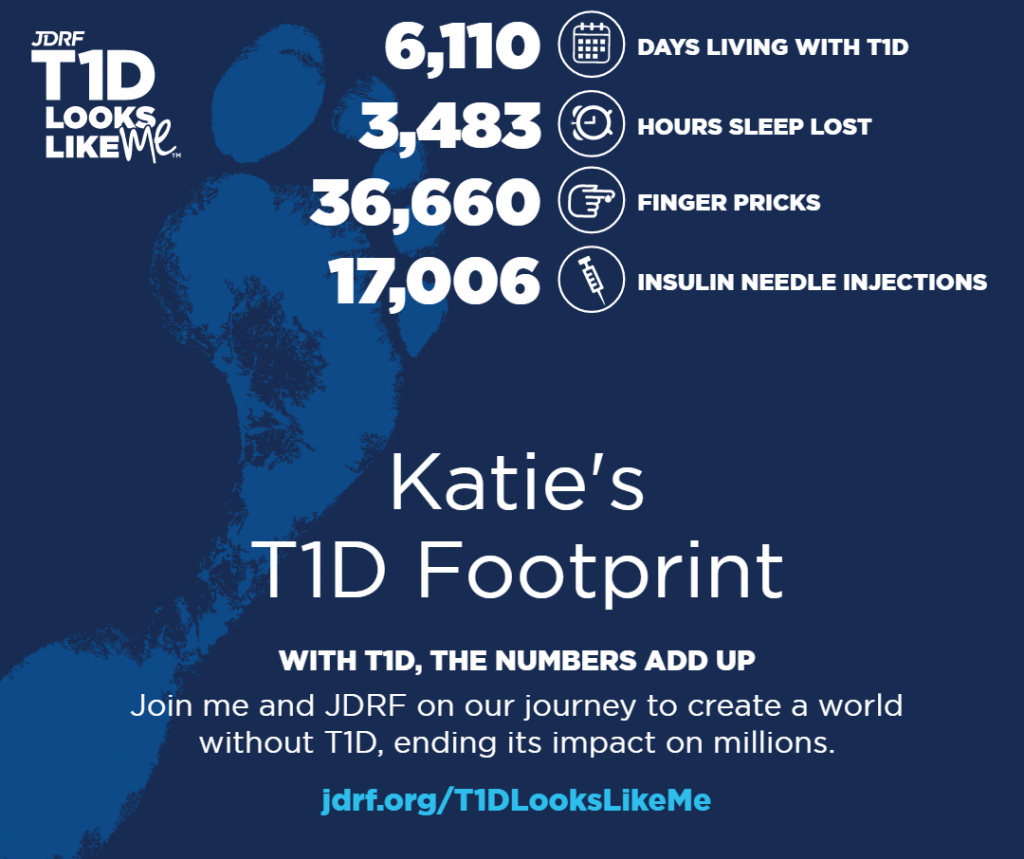World Diabetes Day Blog: Type 1 Diabetes Myth Busters
Katie Greenfield, Communications and Engagement Officer for Wessex, blogs about managing her type 1 diabetes and tackles some of the most common myths.
Before I was diagnosed with type 1 diabetes aged 13, I only had a very vague idea about what diabetes was. I thought that people with the condition couldn’t eat sweet things; that only overweight people got diabetes and that it wasn’t very serious.
Well, it turns out these are all myths. For World Diabetes Day, I’m myth-busting some of the most common misconceptions about type 1 diabetes. How many of these can you get right?
True or False:
You’re more likely to get diabetes if you’re overweight or don’t exercise
FALSE..ish: It depends on the type of diabetes.
Over 90% of people with diabetes have type 2, which is more likely to occur if you are overweight and don’t exercise. However, I have type 1 diabetes, which is not caused by lifestyle factors. It’s an autoimmune condition – the immune system mistakenly attacks and destroys the insulin-producing cells in the pancreas. No one knows why this happens and it’s not caused by anything an individual did, or didn’t do.
One of the main symptoms of type 1 diabetes is unexplained weight loss.
Everyone with diabetes can manage their diabetes through diet and exercise alone
FALSE: Although many people with type 2 diabetes may, at least initially, be able to manage their condition through lifestyle factors, this is not the case for type 1.
I wouldn’t survive beyond about 2 days if I stopped taking insulin. I used to take 4-8 injections of insulin a day. Now, I use an insulin pump instead.
 An insulin pump works just like a pancreas
An insulin pump works just like a pancreas
FALSE: My insulin pump delivers small amounts of insulin every few minutes through a cannula (a needle) that I insert under the skin. I change the cannula about every 48 hours. When I require more insulin (e.g. at mealtimes, when I’m stressed or unwell) I program it to deliver extra insulin.
However, the pump does not know how much insulin I need. I have to guesstimate this multiple times a day. The pump has no idea when my blood glucose is dangerously low (hypoglycaemic) and will continue delivering insulin unless I stop it. Likewise, it doesn’t know to give me extra insulin when my blood glucose is too high. I have to be my own pancreas and it isn’t easy!
People with diabetes cannot eat sweet things
FALSE: People with type 1 diabetes can eat ANYTHING, just like people without diabetes. Yep, that includes sweets, cake and ice cream. I just programme my pump to deliver more insulin when I want to eat carbohydrates. When my blood glucose drops too low, I eat or drink sweet things to treat this, so not only can I eat sweets, they also save my life!
It’s easy to manage type 1 diabetes, as long as you follow the rules
FALSE: Type 1 diabetes is an inherently unstable condition. No two days are the same so I never know how much insulin I should take each day.
Numerous factors influence the amount of insulin I need. These include: stress, illness, hormones, carbs, fats and protein eaten, emotions, temperature, the weather, how much sleep I’ve had, type and duration of exercise I’ve done in the last 48 hours, where the pump cannula is, timing of insulin dose, variations in the insulin action and caffeine. Because of these factors, it’s impossible to keep blood glucose levels stable all the time.
A hypo is when you feel really hungry around lunchtime
FALSE: For people with type 1 diabetes, a hypo is a blood glucose reading of below 4mmol/L, which is a common and inevitable side effect of taking insulin. My main hypo symptoms are a lot more than just feeling hungry, I experience intense anxiety/fear, palpitations and sweating. I also find walking, talking and thinking becomes very hard.
Like a lot of people with type 1, my worst hypos are overnight. I can go to sleep with an ‘in-range’ blood glucose level and wake up several hours later with dangerously low glucose levels, which is why I always keep sweets by my bed!
People with type 1 diabetes cannot do strenuous exercise as it will cause a big drop in blood glucose
FALSE: Type 1 hasn’t stopped me from doing anything, including running two marathons. However, it’s not easy to control blood glucose during exercise. High intensity activity tends to dramatically increase my glucose levels, while low-intensity exercise usually drops them, but not always!
Remember, type 1 diabetes can develop at any time, in anyone. The symptoms of type 1 can come on very quickly and if undiagnosed can lead to coma and death. Save lives and be aware of the four (T) signs of type 1 diabetes:
Tiredness – T1D stops the body making the energy it needs to function
Thirsty – the body tries to get rid of excess glucose making you thirsty
Toilet – drinking more water due to increased thirst leads to using the toilet more
Thinness – the body has to get energy from somewhere so it breaks down fat stores, causing weight loss

